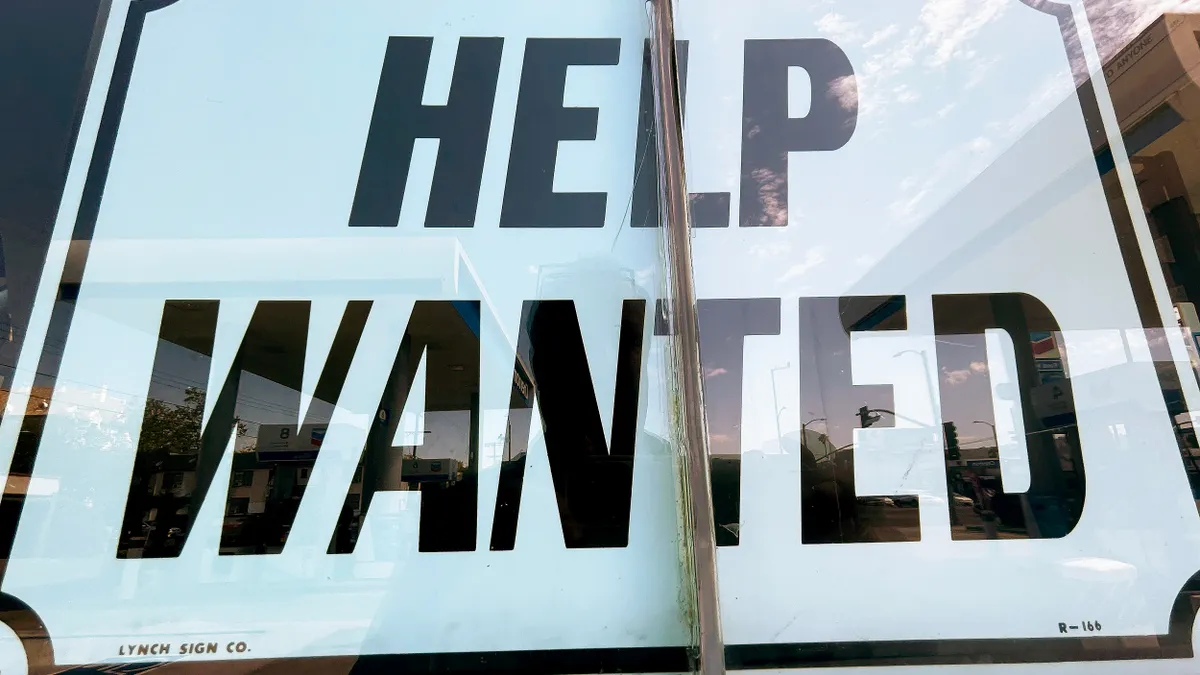Dive Brief:
- College leaders are sharply more concerned about risks from recruitment and hiring than they have been in recent years, according to a new survey.
- Half of college leaders identified recruitment and hiring — employing talented staff and faculty — as one of the most pressing risks facing their institutions, an annual survey from insurer United Educators found. Recruitment and hiring was the 14th most-cited risk in last year's survey, but it vaulted to the third slot in newly released data.
- Rounding out the top three risks were enrollment in the top slot and data security at No. 2. Both spots are unchanged from last year.
Dive Insight:
Every year, United Educators asks its members to identify top risks facing their institutions. Their responses provide a window into the issues weighing most heavily on college administrators' minds.
This year's survey was conducted in September. It includes responses from leaders at 105 colleges, often those holding top lawyer, risk management or business officer positions.
The rise in worries about recruitment is in line with other survey data and public comments from college leaders saying they need to find ways to retain employees in the face of the Great Resignation. But it's notable from a risk management perspective, because turnover and difficulty hiring can expose colleges to many other types of risk if key offices are understaffed or unfilled.
More than half of United Educators survey respondents, 52%, reported concern about being able to manage liability risks due to turnover or vacant positions.
At the same time, a significant portion of respondents, 45%, said the number of incidents involving injury was increasing at a disproportionately quick rate compared to the number of people on campus. This indicates teams are struggling to keep up with campus operations as they pick up speed after pandemic restrictions eased, United Educators said in a report on the findings.
"About half of respondents feel that their risk management functions are ready for current challenges," the report says. "However, the other half are seeing more incidents than expected and are concerned that labor market stresses affect their ability to manage liability risks."
The latest results show leaders concerned about a changing set of health-related risks. Pandemics — COVID-19 and possible future pandemics — were the third-most-cited risk in last year's survey. This year, they dropped to 20th.
But for the first time, this year's survey asked leaders about risks surrounding student mental health, a category including mental illnesses and suicide. The category came in as the fifth most-cited concern, with 24% of leaders identifying it as a pressing risk.
Also breaking into the top 10 was a category for issues like economic, political and social threats, which the survey called external pressures. It slotted in sixth this year, with 22% of leaders identifying it as a top concern.
External pressures are a broad category, and the United Educators report suggests possible mitigation efforts that are equally wide ranging. They include planning for controversial events and protests on campus, changing endowment draw rates, colleges engaging more with local communities, and finding vendors with solid supply chains.
Drawing less attention from college leaders this year are risks related to sexual misconduct. Title IX — risks tied to discrimination on the basis of sex — fell from No. 8 to No 10. A category covering sexual harassment and sexual abuse was the No. 18 most-cited risk.
That's despite President Joe Biden's administration moving forward with new federal Title IX regulations and a steady stream of headlines implicating top college leaders in sexual misconduct scandals.
Here's a list of the top risks in the latest survey, along with how many leaders cited them:
- Enrollment: 67%
- Data security: 65%
- Recruitment and hiring: 50%
- Operational pressures: 42%
- Student mental health: 24%
- External pressures: 22%
- Regulatory and legal compliance (non-Title IX/Violence Against Women Act): 17%
- Facilities and deferred maintenance: 15%
- Public safety: 14%
- Title IX: 13%
United Educators also asked respondents to identify emerging risks that are likely to become more pressing in the near future. Top answers included the political climate, regulations, ransomware and data security, student mental health, the public perception of higher education, and climate change.














